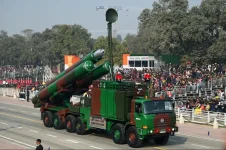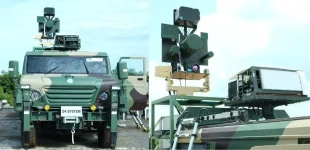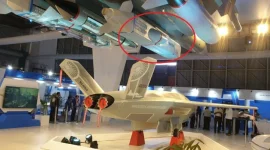- Views: 2K
- Replies: 10
A significant strategic imbalance is emerging on India's western front following Pakistan's induction of the Fatah-II guided multiple-launch rocket system (MLRS).
With a confirmed range of 400 kilometres, this new system gives Pakistan the ability to strike deep-strike targets from a mobile platform, creating an urgent asymmetry that Indian defence planners must address.
Strategic analyses, particularly following the lessons learned during 'Operation Sindoor' in May 2025, suggest that India's current and planned rocket artillery forces fall short of achieving parity.
This has led to growing calls for the Defence Research and Development Organisation (DRDO) to accelerate the development of proposed Pinaka Mk5 and Mk6 variants, with ranges of 400km and 500km respectively, to restore deterrence.
The Fatah-II Challenge
The Fatah-II, which was officially inducted by the Pakistan Army in May 2024, represents a significant leap in its conventional firepower. It is a precision-strike system, with a 2-tube launcher mounted on a highly mobile 8x8 vehicle.Key capabilities of the Fatah-II include:
- Deep Strike: A 400-kilometre range allows it to threaten vital Indian logistics hubs, airfields, and command centres in states from Punjab to Rajasthan, all while being launched from well within Pakistani territory.
- High Precision: The system uses a sophisticated guidance package, including satellite (GNSS) and inertial navigation (INS), along with potential terminal guidance. This gives it a reported accuracy of under 10 meters (Circular Error Probable), turning it from a simple area-saturation weapon into a precision-strike asset.
- Survivability: The rocket's "flat trajectory" can make it more challenging for certain air defence radars to detect and track, adding to its threat profile.
India's Current Posture and the 'Pinaka Gap'
India's primary indigenous MLRS is the combat-proven Pinaka system. While highly successful, its current guided variants have a range of up to 90 kilometres.The DRDO is already working on longer-range versions, including a 120-km rocket and a planned "Pinaka Mk-III" variant, which is expected to achieve a range of 300 kilometres by 2027.
However, analysts point out that even a 300km range falls 100km short of matching the Fatah-II.
This "Pinaka gap" means that India would lack a direct, cost-effective counter-battery option against Fatah-II launchers, forcing it to rely on more escalatory and expensive options like ballistic missiles or combat aircraft.
Lessons from 'Operation Sindoor'
India's tri-service 'Operation Sindoor' in May 2025, launched in response to a terrorist attack, provided critical lessons.During the operation, India's multi-layered air defence network, featuring indigenous systems like the Akash and the Indo-Israeli MRSAM, performed exceptionally well. These systems successfully intercepted and neutralised a barrage of Pakistani drones and missiles launched in retaliation.
While this proved the strength of India's defensive shield, it also highlighted an offensive gap. The ability to intercept incoming rockets is vital, but it is not a complete solution.
Defence experts argue that a credible deterrent requires the ability to hold the launchers themselves at risk. Relying on defence alone allows the adversary to continue firing, potentially overwhelming even the best air defence systems with high-volume salvos.
The Way Forward: A 500km Pinaka
The proposed solution is the development of Pinaka Mk5 (400km) and Mk6 (500km+) variants. Such a program would leverage the modular and cost-effective design of the existing Pinaka platform, aligning perfectly with India's Aatmanirbhar Bharat (self-reliant India) doctrine.By developing an affordable, long-range guided rocket, the Indian Army would gain the necessary firepower to:
- Neutralise Threats: Conduct offensive counter-battery operations to hunt and destroy Fatah-II launchers deep inside enemy territory.
- Establish Deterrence: Create a "denial zone" where enemy artillery cannot operate without fear of an immediate and proportional response.
- Control Escalation: Provide a flexible, conventional deep-strike option that is less escalatory than deploying ballistic missiles like Pralay.





